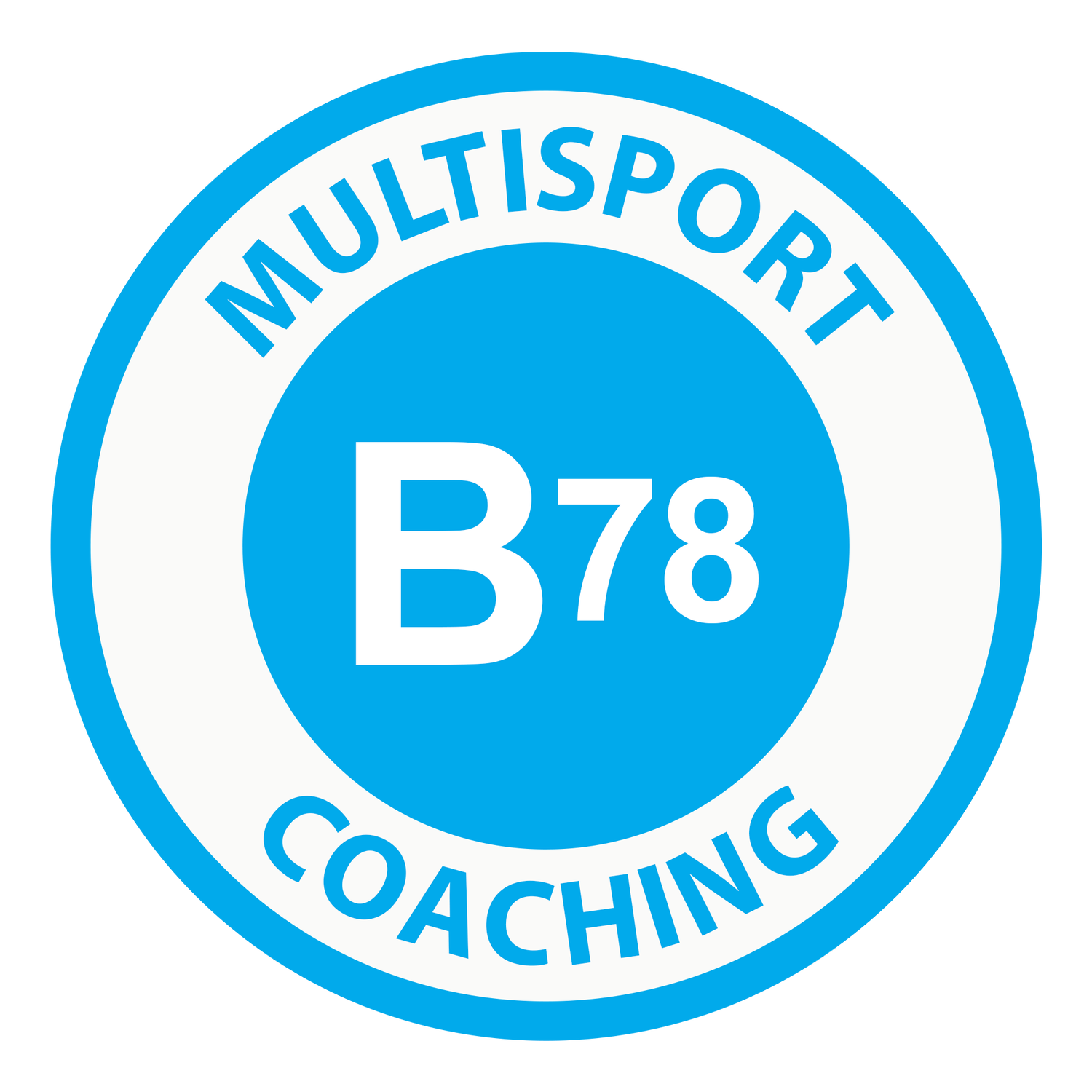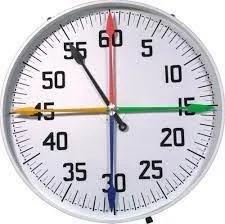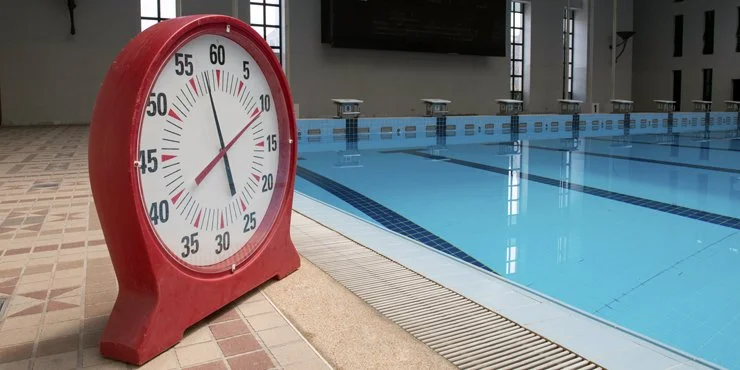How To Use The Pace Clock
Have you ever been to the swimming pool and wondered what the huge clock with the different coloured hands is? That marvel of technology is called a pace clock and it is one of the tools you should become familiar with for your swim and triathlon training.
We live in an era of smart watches and high tech that can record every second of every workout. These devices are useful and a great way to track your triathlon and swim training metrics. However, there is still a very strong case to be made for learning to use the pace clock at the pool.
The first reason is that most swim workouts that are built by qualified swim or triathlon coaches utilize some form of time to manage the duration of the workout and the timing of the sets. Most swimming facilities will allow a finite amount of time for their lane swims or their masters swim groups and as such keeping the workout on track so you don’t run out of time is very important. Of course, your smart watch or the clock on the wall can help you manage your time but what happens when your smart watch battery dies or gets a bit glitchy if the facilities reception is patchy.
The second reason you should learn to use the pace clock is that it’s easy to see and less distracting than your smart watch device. If you are doing a set that is higher intensity and demands strong finishes into the wall, the last thing you should be doing is using the other hand to find a button on your watch so you can record a lap time. A quick glance at the pace clock on the wall will give you the information you need.
The third reason you should learn to use the pace clock for your swimming and triathlon training is that most groups will use this clock to guide the workout. It is far easier to have one reference point for the group of swimmers than multiple reference points on everyones wrist. Swimming and Triathlon coaches will use the clock to establish rest intervals between intervals and sets as well as to space swimmers out in the lane by requiring five or ten second intervals between swimmers during a set.
How to use the pace clock
The pace clock is remarkably simple in its design and as such is quite easy to learn to use. Not all pace clocks look the same. The most common pace clock is large and has four different coloured hands- usually red, blue, yellow and green.
The hands are like the big hand on a traditional watch face. When the hand makes it all the way around the face of the clock one minute has passed.
Swimming and triathlon coaches will often program swim workouts with this in mind. Swim sets are often broken up into shorter intervals whereby the set requires a “pace time”. For example, the set might be 10*100m on 2min. In this case the athlete swims 100m and regardless of their finish time they must start the next interval when the clock gets to two minutes. Let’s use the red hand on the clock to illustrate this example further. The coach writes on the board: 10*100m on 2min leaving on the red top. In this example the first swimmer in the lane (if you are in a larger group) will start the interval when the big red hand gets to the top of the clock (or the 60 which designates 60 seconds or 0 seconds…1 minute). Let’s say that the swimmer finishes the first interval in 1min 40 seconds. This means that the athlete will get 20 second rest until they have to start the next interval.
In larger groups, the coach might also indicate that swimmers should start 5 seconds apart. If the first swimmer starts the first interval on the red top, the second swimmer in the lane will start their interval when the red hand gets to the 5 and the third swimmer will start when the red hand gets to the 10 and so on. Following this, if the second swimmer also finishes their 100m interval in 1 minute and 40 seconds it means they will finish when the red hand completes one full revolution of the clock and then another most of the way around to the 45 on the clock. The second swimmer will need to do some quick math in their head to know their own time and then they will start their second interval when the red hand gets back to the number 5 again.
Different Pace Clocks
Not all pace clocks look the same but the same ideas can be applied to them. Below is a picture of a similar clock with only one hand that moves around the clock in a minute. In this case the red hand counts seconds and the black hand counts minutes. When the red hand completes one full revolution of the clock one minute has passed and when the black hand completes one revolution one hour has passed.
This type of clock is great for smaller groups and is more portable than the larger wall mounted clock in the first picture. Coaches can use this type of clock in the exact same way only they don’t have as much variety with the different hands. One other drawback to this type of clock is that swimmers starting further back in the lane don’t have as easy a reference point as they would with the larger clock with four different coloured hands. For example, let’s say that there are four people in a lane doing the set of 10*100m on 2 minutes. The coach has indicated that the first swimmer will start on the red top. This means that the second swimmer will start when the red hand gets to the 5 and the third swimmer will start when the red hand gets to the 10. The fourth swimmer however, has the choice to mentally use the red hand starting at 15 or use the yellow hand that will now be at the top. Depending on the swimmers preference this might be an easier way to track their time.
Another clock that is fairly common in aquatic facilities is the digital pace clock.
Digital pace clocks are also a great way to manage time during a swim workout. The difference is that what the athlete is looking at changes significantly. Coaches will often still use the same language with a digital clock but they of course take out indications for the colours of the hands. For example the coach might say that the next set will start “on the top” which means the set will start when the clock flips over to a new minute. Digital clocks are also great for spreading swimmers out with specific intervals like five or ten seconds apart.
One of the more significant advantages to digital clocks is that it’s easier to keep track of the overall time of the workout. It is of course possible to do this with the other type of clock but digital clocks are very specific in their communication. The picture of the clock above, for example, explicitly tells us that we are 43 minutes and 27 seconds into the workout (assuming that the clock was started at the beginning of the workout). The added benefit to this is that if the set is long with dozens of intervals it’s easier to keep track. For example, let’s say the set calls for 40*50m on 1 minute. Sometimes it is difficult to keep track of how many you have done when you are working hard. With a digital clock however, you can reset the clock when the set starts and it will always tell you exactly how many intervals have been completed because you can match up the pace time with the time on the clock.
Pace clocks are a great tool to become familiar with. Even if you have the most up to date awesome smart device, you should still try to do your swim workouts using the pace clocks available at the pool.



